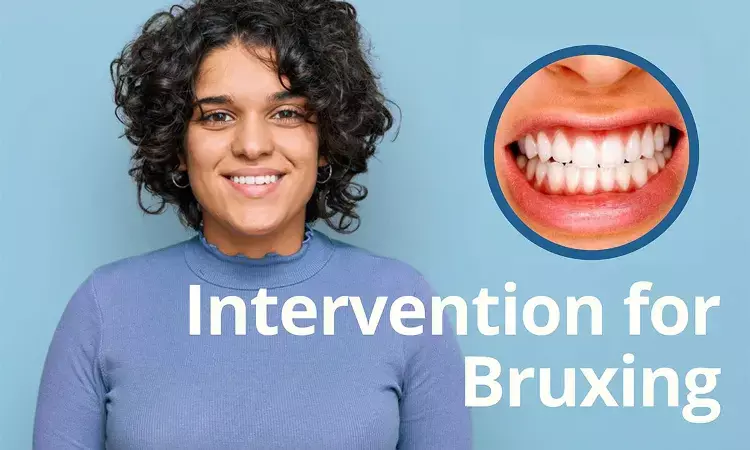- Home
- Medical news & Guidelines
- Anesthesiology
- Cardiology and CTVS
- Critical Care
- Dentistry
- Dermatology
- Diabetes and Endocrinology
- ENT
- Gastroenterology
- Medicine
- Nephrology
- Neurology
- Obstretics-Gynaecology
- Oncology
- Ophthalmology
- Orthopaedics
- Pediatrics-Neonatology
- Psychiatry
- Pulmonology
- Radiology
- Surgery
- Urology
- Laboratory Medicine
- Diet
- Nursing
- Paramedical
- Physiotherapy
- Health news
- Fact Check
- Bone Health Fact Check
- Brain Health Fact Check
- Cancer Related Fact Check
- Child Care Fact Check
- Dental and oral health fact check
- Diabetes and metabolic health fact check
- Diet and Nutrition Fact Check
- Eye and ENT Care Fact Check
- Fitness fact check
- Gut health fact check
- Heart health fact check
- Kidney health fact check
- Medical education fact check
- Men's health fact check
- Respiratory fact check
- Skin and hair care fact check
- Vaccine and Immunization fact check
- Women's health fact check
- AYUSH
- State News
- Andaman and Nicobar Islands
- Andhra Pradesh
- Arunachal Pradesh
- Assam
- Bihar
- Chandigarh
- Chattisgarh
- Dadra and Nagar Haveli
- Daman and Diu
- Delhi
- Goa
- Gujarat
- Haryana
- Himachal Pradesh
- Jammu & Kashmir
- Jharkhand
- Karnataka
- Kerala
- Ladakh
- Lakshadweep
- Madhya Pradesh
- Maharashtra
- Manipur
- Meghalaya
- Mizoram
- Nagaland
- Odisha
- Puducherry
- Punjab
- Rajasthan
- Sikkim
- Tamil Nadu
- Telangana
- Tripura
- Uttar Pradesh
- Uttrakhand
- West Bengal
- Medical Education
- Industry
Daytime bruxism not linked to muscle pain and pain threshold of masticatory muscles

Daytime bruxism is not associated with muscle pain and pain threshold of masticatory muscles suggests a new study published in the Journal of Prosthetic Dentistry
The relationship of awake bruxism with pain is still unclear.
The purpose of this clinical study was to evaluate awake bruxism behavior for 1 week in healthy young adults with ecological momentary assessment, assess its relationship with masticatory muscle tenderness, and the participation of endogenous analgesia.
A total of 150 healthy participants were provided with a smartphone application that sent 10 alerts at random intervals every day. The participants were instructed to report in real time which of the following awake bruxism behaviors best represented their current condition: relaxed jaw muscles, tooth contact, tooth clenching, tooth grinding, or jaw bracing. At baseline, participants underwent recordings of the pressure pain threshold and conditioned pain modulation of the masticatory muscles. Pressure pain threshold recording was also repeated on the last day of the study. A t test was used to compare the first and the last pressure pain threshold recording after 1 week with an ecological momentary assessment evaluation. The Pearson correlation test was performed to evaluate the correlation between variables (α=.05).
Results
Overall compliance was 75.9%. The average frequency of relaxed jaw muscles was 54.5%, tooth contact 29.4%, jaw bracing 5.8%, tooth clenching 9.7%, and tooth grinding 0.6%. The average frequency of a distinct awake bruxism behavior was 45.5%. A statistically significant increase in pressure pain threshold values was found (P=.001; P=.001; P=.045 for right and left anterior temporalis and left masseter, respectively). No significant correlation was found between the frequency of awake bruxism behaviors, the pressure pain threshold, and conditioned pain modulation (P>.05).
The most prevalent behavior was tooth contact (29.4%). No relationship was found between awake bruxism behaviors and masticatory muscle tenderness or endogenous analgesia.
Reference:
Dyanne Medina Flores, Maria Isabel Barragán Nuñez, Henrique Müller de Quevedo, Leonardo Rigoldi Bonjardim, Paulo César Rodrigues Conti. Real time evaluation of awake bruxism behaviors in young asymptomatic students and its impact on the masticatory muscles. Published:April 15, 2023DOI: https://doi.org/10.1016/j.prosdent.2023.03.009
Dr. Shravani Dali has completed her BDS from Pravara institute of medical sciences, loni. Following which she extensively worked in the healthcare sector for 2+ years. She has been actively involved in writing blogs in field of health and wellness. Currently she is pursuing her Masters of public health-health administration from Tata institute of social sciences. She can be contacted at editorial@medicaldialogues.in.
Dr Kamal Kant Kohli-MBBS, DTCD- a chest specialist with more than 30 years of practice and a flair for writing clinical articles, Dr Kamal Kant Kohli joined Medical Dialogues as a Chief Editor of Medical News. Besides writing articles, as an editor, he proofreads and verifies all the medical content published on Medical Dialogues including those coming from journals, studies,medical conferences,guidelines etc. Email: drkohli@medicaldialogues.in. Contact no. 011-43720751


